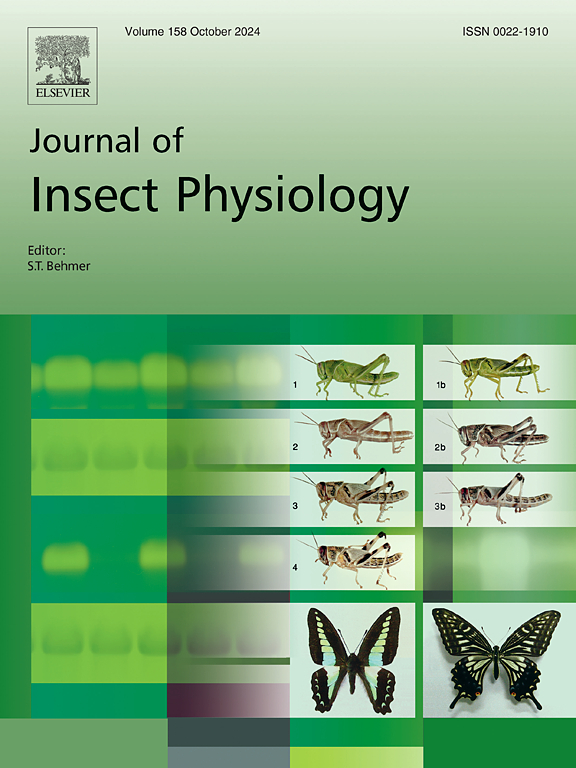生活史性状的营养最佳值随温度和适应当地的种群而变化
IF 2.3
2区 农林科学
Q1 ENTOMOLOGY
引用次数: 0
摘要
随着气候变化,人类必须克服更频繁、更极端地暴露于各种压力源的情况。然而,我们对当地适应人群如何应对压力源组合的了解仍然不完整。最近的研究表明,温度升高会与营养相互作用,从而加剧不良饮食的负面影响,这表明,当个体经历的温度超出其当地适应条件时,营养压力的成本会更高。这可以转化为在生活史特征景观中热胁迫下营养最佳状态的降低,这一假设仍有待验证。在这里,我们使用营养几何框架来测试这一假设,使用了两个当地适应的黑腹果蝇种群,它们来自澳大利亚东海岸一个特征鲜明的适应梯度的两端(热带与温带)。我们发现,在温度较高的热带种群中,营养压力的负面影响明显更大。相比之下,温带种群能够利用更广阔的营养空间,在温度波动的范围内保持高的生存能力和大的翅膀。我们的研究结果揭示了当地适应如何影响种群在日益紧张的热条件下导航和探索营养空间的方式。这些数据表明,某些种群可能能够更好地应对日益紧张和多变的环境,而其他种群可能更容易受到当地灭绝的影响。本文章由计算机程序翻译,如有差异,请以英文原文为准。

Nutritional optima for life-history traits vary with temperature and across locally-adapted populations
As the climate changes, populations must overcome more frequent and more extreme exposure to a wide range of stressors. However, our knowledge of how locally-adapted populations respond to combinations of stressors remains incomplete. Recent studies show that elevated temperatures can interact with nutrition to accentuate the negative effects of a poor diet, suggesting higher costs of nutritional stress when individuals experience temperatures outside of their locally-adapted conditions. This can translate into reduced nutrient optima under thermal stress in life-history trait landscapes, a hypothesis that remains to be tested. Here, we used the Geometric Framework for Nutrition to test this hypothesis using two locally-adapted populations of Drosophila melanogaster from opposing ends of a well-characterised adaptive gradient along the east coast of Australia (tropical vs. temperate). We found that the negative effects of nutritional stress were significantly greater in the tropical population under warmer temperatures. In contrast, the temperate population was able to utilise a broader nutritional space to maintain high viability and a large wing size across the range of fluctuating temperatures. Our findings reveal the ways in which local adaptation impacts how populations navigate and explore the nutritional space in response to increasingly stressful thermal conditions. These data suggest that certain populations may be better able to cope with increasingly stressful and variable environments, while others may be more vulnerable to local extinctions.
求助全文
通过发布文献求助,成功后即可免费获取论文全文。
去求助
来源期刊

Journal of insect physiology
生物-昆虫学
CiteScore
4.50
自引率
4.50%
发文量
77
审稿时长
57 days
期刊介绍:
All aspects of insect physiology are published in this journal which will also accept papers on the physiology of other arthropods, if the referees consider the work to be of general interest. The coverage includes endocrinology (in relation to moulting, reproduction and metabolism), pheromones, neurobiology (cellular, integrative and developmental), physiological pharmacology, nutrition (food selection, digestion and absorption), homeostasis, excretion, reproduction and behaviour. Papers covering functional genomics and molecular approaches to physiological problems will also be included. Communications on structure and applied entomology can be published if the subject matter has an explicit bearing on the physiology of arthropods. Review articles and novel method papers are also welcomed.
 求助内容:
求助内容: 应助结果提醒方式:
应助结果提醒方式:


